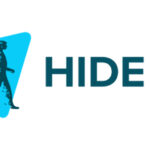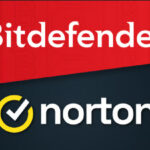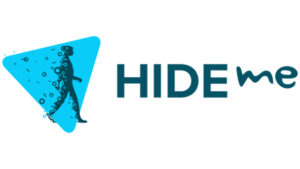401(k) Contribution Limits Investing in a 401(k) plan is one of the smartest ways to save for retirement. These plans offer high contribution limits and tax-deferred growth, allowing individuals to accumulate significant wealth over time. Employer matching contributions provide an additional boost to retirement savings, making it a powerful tool for building financial security.The convenience of automated contributions and diversified investment options have made managing one’s retirement portfolio easier than ever before. However, it is essential to note the maximum amount that one can contribute per year to the account to maximize retirement savings.While 401(k) plans offer many advantages, there are some potential downsides.
One disadvantage is limited investment options. Moreover, early withdrawals from these plans may come with penalties and taxes. Nevertheless, for most investors, the benefits of a 401(k) plan far outweigh any drawbacks, making it an excellent choice for anyone looking to secure their financial future in retirement.It is worth noting that while 401(k) plans are popular among employees in large companies, small business owners can also set up their own 401(k) plans and enjoy the same benefits. Furthermore, individuals who do not have access to a 401(k) plan through their employer can opt for individual retirement accounts (IRAs), which offer similar tax-deferred growth and investment opportunities.
Outlines Of Guide
Toggle401(k) Contribution Basics
A 401(k) account is a retirement savings plan that employers sponsor. It enables employees to invest for their future while also saving money on taxes. Employees can choose the amount of money they want to deduct from their paycheck each pay period, known as a contribution. The Internal Revenue Service (IRS) sets the maximum amount of these contributions, which helps regulate the tax benefits and overall 401(k) plan structure to encourage responsible retirement planning.The funds in a 401(k) account are typically invested in stocks, bonds, or mutual funds, and earnings from these investments are tax-deferred until withdrawal during retirement.
Some employers may match employee contributions up to a certain percentage, which can further boost retirement savings.It’s important for employees to regularly review their 401(k) accounts and adjust their contributions based on changes in financial circumstances or life events. Additionally, it’s crucial to understand the fees associated with a 401(k) plan and make informed investment decisions to ensure maximum returns on investment. Overall, a 401(k) account is an excellent tool for building long-term wealth and financial security in retirement.
Types Of Contributions
401(k) contributions can be divided into two categories: traditional and Roth. Both types have higher contribution limits for employees aged 50 or above. Traditional contributions are tax-deferred, which implies that the employee pays taxes on the money when they withdraw it in retirement. Conversely, Roth contributions are made with after-tax dollars and are entirely tax-free upon withdrawal during retirement. When deciding which type of contribution is best for you, it is essential to take your personal financial situation and goals into account. It’s also worth noting that tax laws may change over time, so what works best for you now may not be the best choice in the future. Additionally, some employers offer matching contributions for their employees’ 401(k) accounts, which can be an excellent incentive to contribute as much as possible.
Traditional Contributions
When it comes to 401(k) accounts, a traditional contribution refers to the standard contribution made by an individual. These contributions are made pre-tax, which means they can reduce taxable income in the year they are made and offer potential tax benefits. This type of contribution is a great option for those who anticipate being in a lower tax bracket when they retire. Additionally, employers often match traditional contributions up to a certain percentage, making it an even more attractive savings option for employees. However, keep in mind that withdrawals from traditional 401(k) accounts are subject to taxes during retirement.
Roth Contributions
Roth contributions are an investment option that permits employees to contribute their post-tax income. Although Roth contributions do not offer an immediate tax deduction, qualified withdrawals, including earnings, are tax-free in retirement. This makes them an excellent choice for people who anticipate being in a higher tax bracket during their retirement years. Furthermore, unlike traditional 401(k) plans, Roth accounts do not mandate required minimum distributions (RMDs), allowing account holders to keep their money in the account for as long as they want. It is important to note that while Roth contributions can be withdrawn at any time without penalty, withdrawing earnings prematurely may result in a 10% penalty and income taxes owed on the amount withdrawn.
Catch-Up Contributions
Individuals who are 50 years and older are allowed to make additional contributions to their retirement accounts, called catch-up contributions. These contributions are intended to help those approaching retirement age to save more money, as they may have a shorter time period left to accumulate funds.
The Internal Revenue Service has established specific limits for traditional and catch-up retirement account contributions, which serve as guidelines for responsible retirement planning.It is important for individuals nearing retirement age to take advantage of these catch-up contributions if they can afford it. By doing so, they can potentially increase their overall savings and achieve a more comfortable retirement. However, it is crucial to consult with a financial advisor before making any significant financial decisions, as there may be tax implications and other considerations that need to be taken into account.
Key Points
- The primary differences in employer-sponsored retirement plans such as the 401(k), 403(b), SIMPLE IRA, SEP IRA or Pension Plan lies in eligibility criteria, contribution limits, and employer contributions.
- As of 2023, individual employees have a 401(k) contribution limit of $22,500, allowing them to contribute this amount annually to their 401(k) account on a pre-tax basis. However, for 2025, this limit has increased to $23,000, allowing individuals to contribute an additional $500 toward their retirement savings.
- One’s investment strategy in a 401(k) account depends more on the individual’s financial goals, risk tolerance and time horizon rather than the account type itself. Both Roth and traditional 401(k) accounts offer various investment options, including stocks, bonds, mutual funds and exchange-traded funds (ETFs).
Orangebybk has compiled a list of the most promising investment opportunities for 2025, identifying the “12 Best Stocks To Buy for 2025.” The report features stocks that have shown exceptional performance and potential for significant returns. By downloading this report, investors can gain valuable insights and make informed decisions when allocating their funds. It is essential to do thorough research before investing in any stock market, and this report can serve as a useful resource to guide your investments in the right direction. However, it’s important to remember that investments always come with risks, and past performance doesn’t guarantee future success.
401(k) Contribution Limits For 2025
Numerous investment accounts are accessible to investors, including those specifically tailored to aid in retirement savings. Individual Retirement Account (IRA) Employer-sponsored retirement accounts are part of larger plans, which include:
- 401(k) Plan
- 403(b) Plan
- SIMPLE IRA
- SEP IRA
- Defined Benefit Plan (Pension)
There are different types of retirement plans sponsored by employers, each with its own distinct features. These may include the 401(k) plan, the 403(b) plan (often found in the nonprofit sector), and the SIMPLE and SEP IRA plans for small businesses.
The main distinctions are found in the eligibility requirements, contribution thresholds, and employer contributions. For example, 401(k) and 403(b) plans generally permit both employee and employer contributions, whereas SIMPLE IRAs and SEP IRAs are frequently administered using designated contribution formulas. It is important for investors to be aware of the contribution limits, vesting schedules, and withdrawal regulations linked to each type of account. Furthermore, employer-sponsored plans often include matching contributions, which serve as an additional encouragement for employees to take part and optimize their retirement funds.
Employee 401(k) Contribution Limits For 2025
In the US, employees can contribute up to $22,500 annually to their 401(k) accounts on a pre-tax basis as of 2023. However, this contribution limit has been increased to $23,000 for the year 2025, allowing individuals an extra $500 towards their retirement savings. It is worth noting that those aged 50 or over are eligible to make catch-up contributions of up to $6,500 in addition to the regular contribution limit. Maximizing your contributions can help you build a substantial nest egg for your retirement and take advantage of tax-deferred growth opportunities.
The contribution limits for 401(k) plans are applicable per individual, implying that an employee can contribute to multiple plans if they have more than one employer. However, the total contributions made across all the plans must not exceed the annual limit. For individuals aged 50 and above, there is an additional catch-up contribution allowance of $7,500 in 2023 and 2025. This provision allows older employees to increase their annual savings recognizing their need to accelerate retirement savings as they approach their golden years. It is essential to keep track of these limits to ensure you are making the most out of your retirement savings opportunities while staying within legal boundaries.
Employee And Employer Match 401(k) Contribution Limits For 2025
Employer-sponsored retirement plans offer an attractive incentive for employees to save for their post-retirement years. Matching contributions from employers often encourage employees to set aside more money towards their retirement funds. The employer will typically match a percentage of the employee’s salary contribution up to a specified limit. In 2023, the overall annual contribution limit (including both individual and employer contributions) was $66,000, while it has been raised to $69,000 for 2025. By contributing the maximum amount allowed by law, employees can maximize their employer’s matching contribution and accelerate their progress towards achieving their retirement savings goals.
Traditional 401(k) Vs. Roth 401(k) Contribution Limits (H2)
As previously stated, there are two kinds of 401(k) accounts: traditional and Roth. The traditional 401(k) involves employees contributing a portion of their pre-tax income into an investment account for retirement savings. The contributions and investment earnings are tax-deferred until withdrawal during retirement, at which time they are taxed as ordinary income.
A Roth 401(k) is a retirement savings plan that allows employees to invest income after taxes. Unlike traditional 401(k) plans, Roth contributions do not offer immediate tax deductions. However, qualified withdrawals, including earnings, are tax-free during retirement. The choice between the two types of plans depends on factors like individual financial circumstances, taxes, and retirement income expectations.
Those expecting a higher tax bracket during retirement may find Roth 401(k) plans more beneficial as they pay taxes upfront and can withdraw funds tax-free. Conversely, those anticipating a lower tax bracket post-retirement may prefer traditional 401(k) plans for immediate tax deductions. Consulting with a financial advisor or accountant is essential before deciding which plan to choose due to their respective advantages and disadvantages based on individual goals and circumstances.
The investment strategy in a 401(k) account is determined more by an individual’s financial objectives, risk tolerance, and time horizon than by the type of account. Both Roth and traditional 401(k) accounts provide a range of investment options, including stocks, bonds, mutual funds, and exchange-traded funds. With a Roth 401(k), contributions are made with after-tax dollars, allowing for tax-free withdrawals in retirement, which is beneficial for high-growth investments like stocks. In a traditional 401(k), contributions are made with pre-tax dollars, and taxes are deferred until retirement, making it suitable for income-generating securities such as dividend stocks and bonds.
Traditional 401(k)s
Traditional 401(k) accounts are a popular retirement savings option that offer pre-tax contributions and tax-deferred growth. This means that you can contribute to your 401(k) account before taxes, which reduces your taxable income and lowers your tax bill. Additionally, the money in your account grows tax-free until you withdraw it at or after retirement age. However, any withdrawals from traditional 401(k) accounts are subject to ordinary income tax rates. Because of these tax benefits, it is recommended to invest in options that provide annual income or dividends, as they can help maximize the long-term growth potential of your retirement savings.
Roth 401(k)s
Roth 401(k) accounts are an attractive retirement savings option for those looking to minimize taxes in the long run. These accounts require post-tax contributions, meaning that you pay taxes on the money before it goes into your account. However, this also means that any growth in your account is tax-deferred, and qualified withdrawals are not subject to ordinary income tax. This makes Roth 401(k) accounts a smart choice for individuals who anticipate being in a higher tax bracket during retirement or who want to avoid paying taxes on their retirement income altogether. Additionally, Roth 401(k) accounts do not have required minimum distributions (RMDs), which can provide greater flexibility for retirees in managing their finances.
Orangebybk has compiled a comprehensive report on the best places to make money in 2025. The “12 Best Stocks To Buy for 2025” report provides valuable insights into investment opportunities with significant returns. Investors and financial experts eagerly anticipate this report as it offers guidance on where to invest for maximum growth. We have analysts have scrutinized stocks using industry trends, economic indicators, and company performance. This essential report covers promising stocks across sectors like technology, healthcare, and finance. It helps investors make informed decisions to maximize long-term returns.
Why Contributions Matter
For effective retirement planning, it is essential to understand the contribution limits for 401(k) plans. These limits dictate the highest amount that individuals can contribute annually to their 401(k) accounts. By being aware of these limits, individuals can optimize their contributions and take advantage of the available tax benefits such as tax-deferred growth or tax-free withdrawals in the case of Roth 401(k)s.Exceeding these contribution limits can result in tax penalties.
Therefore, it is crucial to tailor your contributions to stay within the allowable limits, ensuring you make the most of your retirement savings while staying compliant with tax regulations. This approach ultimately leads to a more secure financial future.It’s worth noting that 401(k) contribution limits are subject to change year over year due to inflation adjustments made by the IRS. For instance, in 2021, the maximum contribution limit for an individual under 50 years old is $19,500. The limit increases to $26,000 for those aged 50 and above. Keeping yourself updated on any changes in these limits can help you plan better for your retirement years.
Tax Advantages
401(k) contributions can have a significant impact on your taxable income and current tax liability. If you opt for a traditional 401(k), your annual contribution will reduce your taxable income, leading to a lower current tax liability. However, when you withdraw funds during retirement, they are subject to income tax.On the other hand, if you choose a Roth 401(k), your contributions are made with after-tax dollars, providing no immediate tax deduction.
This increases your current tax liability but is advantageous in that qualified withdrawals in retirement, including earnings, are entirely tax-free.Deciding between traditional and Roth 401(k) contributions requires weighing the desire for immediate tax benefits against the potential for tax-free withdrawals in retirement. It’s essential to examine your current financial situation and long-term goals before making a decision. Keep in mind that it’s possible to split contributions between both types of accounts to balance out immediate benefits with future savings.
Retirement Security
A 401(k) plan is an ideal retirement savings option for individuals due to its high contribution limits. Consistent contributions to a 401(k) allow individuals to benefit from compound growth, which can provide a reliable source of income during retirement. Taking full advantage of employer matching programs and contributing regularly can help maximize the benefits of a 401(k) plan and ensure a comfortable retirement.Starting early and investing in a diversified portfolio are crucial factors in achieving long-term financial security through a 401(k) plan. By starting early, individuals have more time to accumulate wealth through compound growth. Investing in a diversified portfolio can also help minimize risk while maximizing potential returns.
It is important to remember that contributions made towards a 401(k) are tax-deferred until withdrawn, making it an effective way to reduce taxable income.Additionally, it is essential to track the performance of your 401(k) investments and make adjustments as needed. Regularly reviewing your investment strategy can help ensure that you achieve your retirement goals. With careful planning and disciplined saving habits, a 401(k) plan can be an effective tool for building long-term financial security.
Employer Matching
Employer matching is an attractive benefit for employees as it adds extra funds to their retirement savings without any added cost or effort. Employers offer a matching contribution based on a specific percentage of the employee’s contributions or their salary up to a specified limit. The primary reasons why employers offer matching contributions include attracting and retaining top talent, promoting employee financial wellness, and fostering a sense of loyalty.
The employer match is often viewed as “free money” since it provides an additional boost to the employee’s retirement savings. This additional contribution can help maximize contributions and accelerate wealth accumulation for a secure retirement. However, it is worth noting that each employer has different rules regarding the vesting period, which refers to how long an employee must stay with the company before they are entitled to the full amount of their employer’s contributions.In addition to matching contributions, employers may also offer other retirement benefits such as profit-sharing plans or defined benefit pension plans. It’s important for employees to explore all available options and make informed decisions about their retirement savings plan. Planning early and seeking professional advice can go a long way in ensuring a comfortable retirement.
How To Maximize Your Contributions
Contributing the maximum allowable amount to a 401(k) plan is a smart way for employees to maximize their retirement savings. To do this, it is important to consider the annual contribution limits set by the IRS and aim to contribute the maximum amount allowed. Taking advantage of the full matching contribution from the sponsoring company is also crucial as it can significantly boost one’s retirement savings.
For those aged 50 and above, utilizing catch-up contributions can help increase the contribution limit even further. This allows older employees to make larger contributions towards their retirement savings and make up for lost time. It is important to note that contribution limits may change over time, so keeping up-to-date with any updates or changes by regularly reviewing one’s retirement plan is highly recommended. By following these guidelines, employees can ensure they are contributing as much as possible towards their retirement savings and securing their financial future.
Review Contribution Limit Changes
To keep up with inflation and changing economic conditions, the IRS updates contribution limits for retirement accounts, including 401(k) plans, annually. Staying informed about these changes is essential for those who want to maximize their retirement savings. It provides readers with an opportunity to adjust their contributions accordingly, ensuring that they make the most of the available tax-advantaged space while also complying with IRS regulations.By keeping abreast of these annual updates, individuals can proactively manage their contributions to meet evolving financial goals and optimize the benefits of their 401(k) plans.
When determining the contribution amount, it is crucial to take into account factors like age and income level, as well as to be aware of potential employer matching contributions and other plan benefits. For individuals seeking more control over their retirement savings, seeking guidance from a financial advisor can be beneficial in understanding and managing these intricacies. Collaborating with a reliable professional can help individuals make well-informed decisions that correspond with their future financial objectives. Keeping up-to-date with alterations in contribution limits and other retirement planning advancements is vital for securing one’s financial future.
Take Advantage Of Catch-Up Contributions
Catch-up contributions enable individuals aged 50 and above to optimize their retirement account savings. This provision allows them to contribute funds beyond the annual limits set by the IRS. With catch-up contributions, individuals can enhance their retirement savings during the crucial years preceding retirement. This strategy is beneficial for those who may have made lower contributions in their earlier years and now want to make up for lost time.By taking advantage of this provision, older individuals can maximize the tax-advantaged space available to them.
They can benefit from increased retirement readiness, giving them peace of mind as they approach their golden years. Catch-up contributions are available for various types of retirement accounts such as 401(k) plans, IRAs, and SIMPLE IRA plans.It is important to note that catch-up contributions have specific rules regarding eligibility, contribution limits, and deadlines. Therefore, it’s essential to understand these guidelines before making any additional contributions. It’s also advisable to consult a financial advisor or tax professional who can guide you through the process and help you make informed decisions about your retirement planning.
Automate Contributions
Automating 401(k) contributions is an excellent proactive strategy for individuals to ensure a steady and disciplined approach towards retirement savings. This method eliminates the risk of forgetting or neglecting to contribute while also allowing the benefit of dollar-cost averaging, where contributions are spread across different market conditions.By consistently making automated contributions over time, individuals can harness the power of compounding which can help maximize the growth potential of their retirement savings. This hands-off approach promotes financial discipline and contributes to a more secure retirement future. It is important to note that automatic contributions can be adjusted based on changes in income or other significant life events. Overall, automating 401(k) contributions is an effective way for individuals to prioritize and achieve their long-term financial goals.
Bottom Line
For individuals seeking to maximize their investment contributions and build adequate retirement savings, it is crucial to have an in-depth understanding of the key features of a 401(k) account. Staying up-to-date with the current annual limits on retirement account contributions is also important as these figures change annually.To make the most of a 401(k) account, investors should strive to maximize their contributions while taking advantage of employer matches if available. Catch-up contributions designed for those aged 50 and above can also be utilized for additional retirement savings.Investment decisions within a 401(k) plan should consider factors such as investment options, fees, and tax implications. By following these strategies, investors can set themselves up for a financially secure retirement. In addition, it’s essential to review your 401(k) regularly and adjust investments as necessary to ensure you’re on track to meet your retirement goals.










































